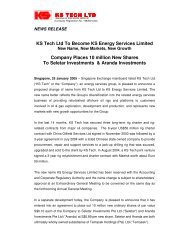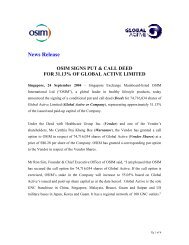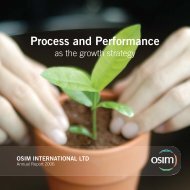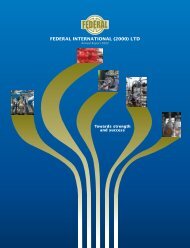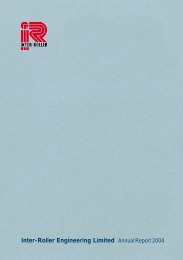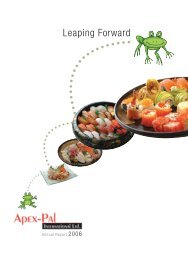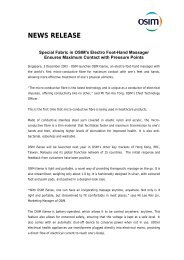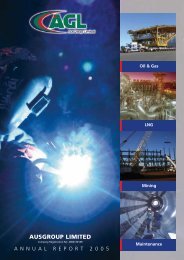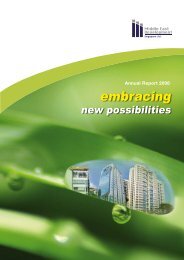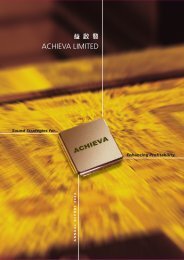FRONTLINE COVER FA 070606 CR2.indd
FRONTLINE COVER FA 070606 CR2.indd
FRONTLINE COVER FA 070606 CR2.indd
You also want an ePaper? Increase the reach of your titles
YUMPU automatically turns print PDFs into web optimized ePapers that Google loves.
60<br />
frontline technologies corporation ltd<br />
annual report 2006<br />
> notes to the financial statement<br />
for the year ended 31 march 2006<br />
2. Significant accounting policies (cont’d)<br />
(q) Leases (cont’d)<br />
(iii) Finance lease<br />
When assets are leased out under a finance lease, the present value of the lease payments is recognized as a<br />
receivable. The difference between the gross receivable and the present value of the receivable is recognised<br />
as unearned finance income. Lease income is recognized in the profit and loss account over the term of the<br />
lease using the net investment method, which reflects a constant periodic rate of return. Initial direct costs<br />
are charged to profit and loss account as an expense at the commencement of the lease period.<br />
(r)<br />
Borrowings and loans<br />
Borrowing costs are generally expensed as incurred. Borrowing costs are capitalised if they are directly<br />
attributable to the acquisition, construction or production of a qualifying asset. Capitalisation of borrowing<br />
costs commences when the activities to prepare the asset for its intended use or sale are in progress and the<br />
expenditures and borrowing costs are being incurred. Borrowing costs are capitalised until the assets are<br />
ready for their intended use. If the resulting carrying amount of the asset exceeds its recoverable amount, an<br />
impairment loss is recorded.<br />
Loans and borrowings are initially recognised at cost and subsequently measured at amortised cost using the<br />
effective interest rate method. The difference between net proceeds and redemption value being recognised in<br />
the profit and loss account in the period over the life of the borrowings.<br />
(s)<br />
Income tax<br />
Income tax on the profit or loss for the year comprises current and deferred tax. Income tax is recognised in the<br />
income statement except to the extent that it relates to items recognised directly to equity, in which case it is<br />
recognised in equity.<br />
Current tax is the expected tax payable on the taxable income for the year, using tax rates enacted or substantially<br />
enacted at the balance sheet date, and any adjustment to tax payable in respect of previous years.<br />
Deferred income tax is provided using the liability method, on all temporary differences at the balance sheet<br />
date arising between the tax bases of assets and liabilities and their carrying amounts in the financial statements.<br />
Currently enacted tax rates are used in the determination of deferred income tax.<br />
Deferred tax assets are recognised to the extent that it is probable that future taxable profit will be available<br />
against which the temporary differences can be utilised.<br />
Deferred tax are charged or credited to equity if the tax relates to items that are credited or charged, in the same<br />
or a different period, directly to equity.<br />
(t)<br />
Club memberships<br />
Club memberships, are held on a long-term basis and are stated at cost less impairment losses, if any.





